How to load a dishwasher
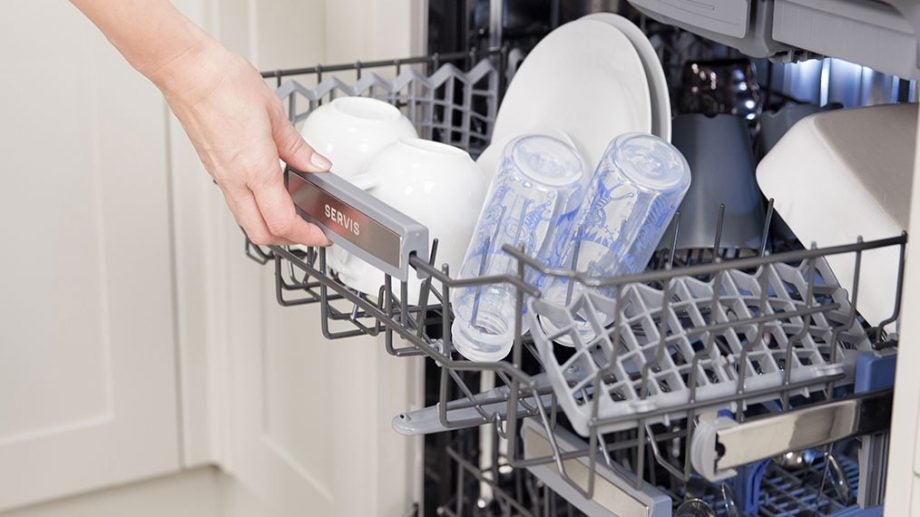
The secret to getting clean crockery and sparkling glassware from your dishwasher every time? It’s all in the stacking. Dishwashers can be brilliant, taking the hard work out of clearing up after a meal, but they’re only as effective as the person who loads them. More often than not, if dishes emerge as grubby as they went in, it’s because the jets of water and detergent haven’t been able to reach them properly.
Follow our guide on how to load a dishwasher, and not only will you save time and energy on re-washing, you’ll learn how to use of every rack, spindle and holder to fit more into your dishwasher than you may have at first thought possible.
Before you place anything into the dishwasher, scrape or empty it. Whether or not you rinse first will be down to personal preference – but doing may reduce how often you need to clean out your dishwasher.
Nevertheless, a quick rinse is advised if you’re unlikely to be running the dishwasher straight away, since dried-on debris can be harder to shift. Similarly, soaking dishes with baked-on food before loading them into the dishwasher is likely to lead to better results.
Related: Best dishwashers
1. Get to know your dishwasher
Make your first port of call your dishwasher’s manual. It should tell you which racks and supports your model includes, which sections can be adjusted to suit different-sized dishes or glassware, plus the best place for certain items.
The advice can vary between manufacturers, so don’t be surprised if what you read for your latest dishwasher is different or contrary to the advice below. A good rule of thumb is to reach into the dishwasher and spin the spray arm located below your item – if a droplet of water hits it, it should receive a good clean during the programme.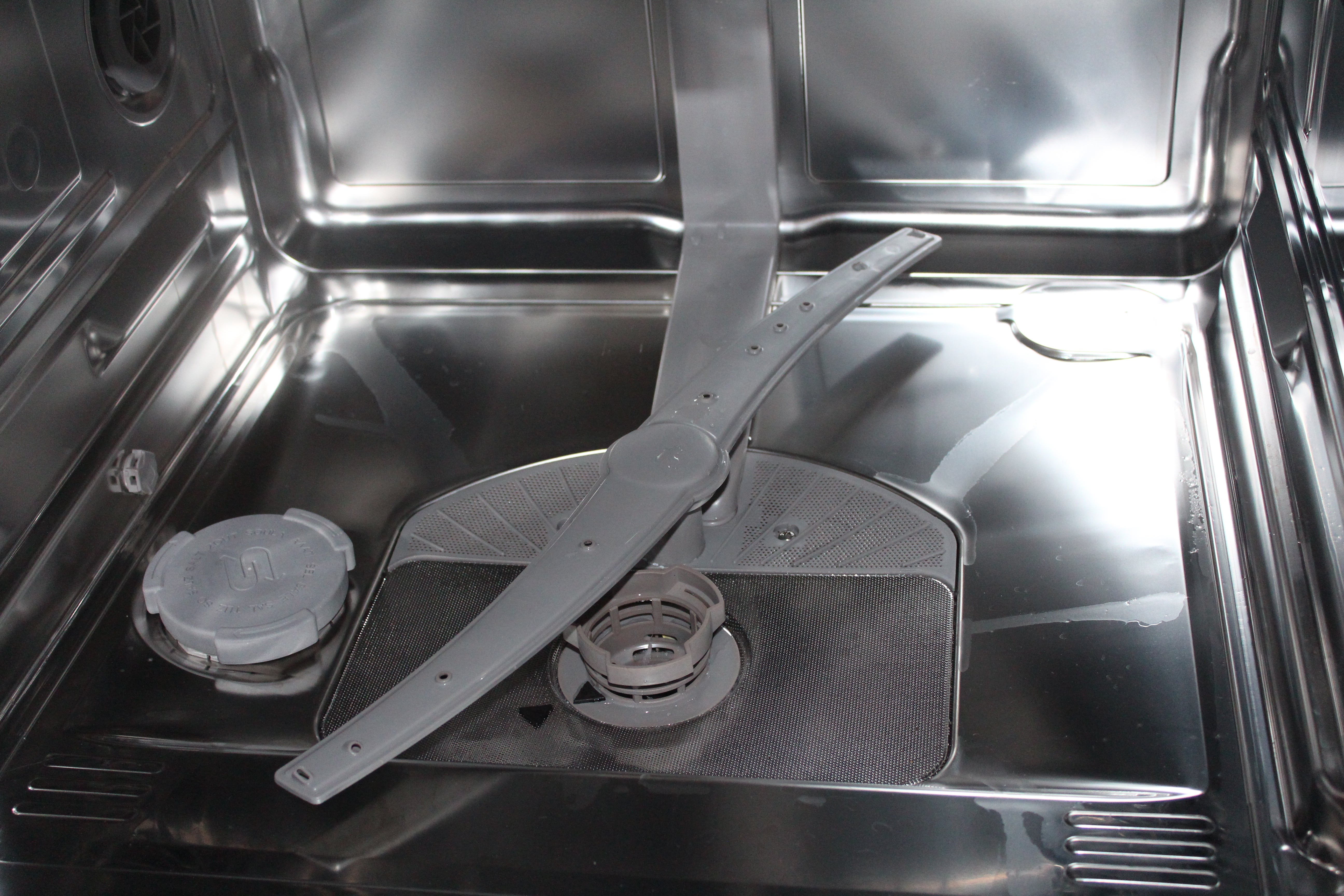
2. Ready to start loading?
Begin loading at the bottom, from the back with the largest items. Baking trays or platters can prevent water and detergent reaching all areas of the dishwasher, so tuck them at the sides or back (not the front, since they can block detergent dispersal). For all flat surfaces, face the dirty side inwards, towards the centre, since that’s where the water jets emerge from the arms. Any item with baked-on food or excess grease can be placed face down for an intense clean.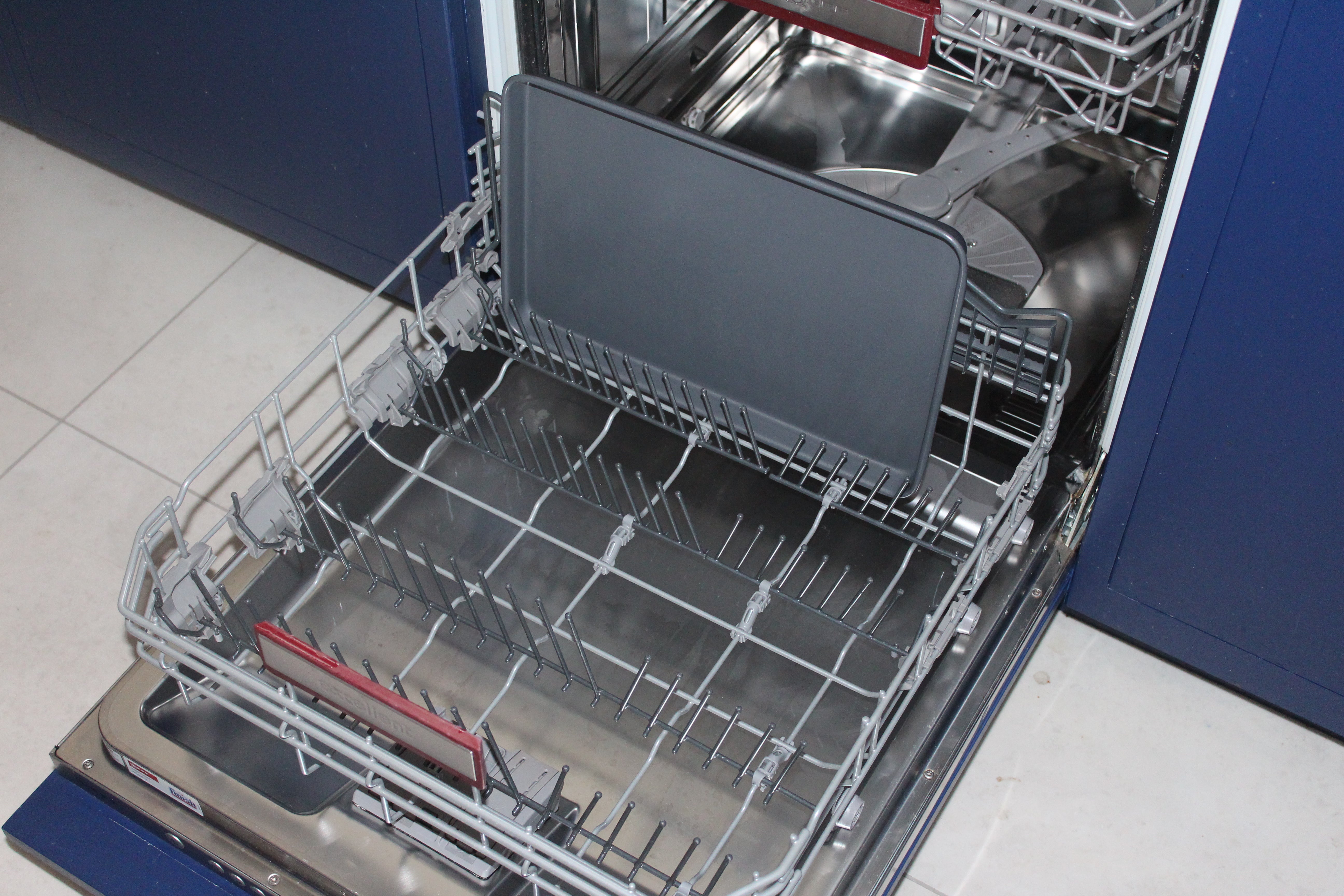
3. Place heavy items at the bottom
Pots, pans and plates should go onto the bottom rack, so they receive a more intensive clean from the most powerful, hotter jets of water. Mix up sizes of plates when possible, so there’s a range of heights for the water to work around.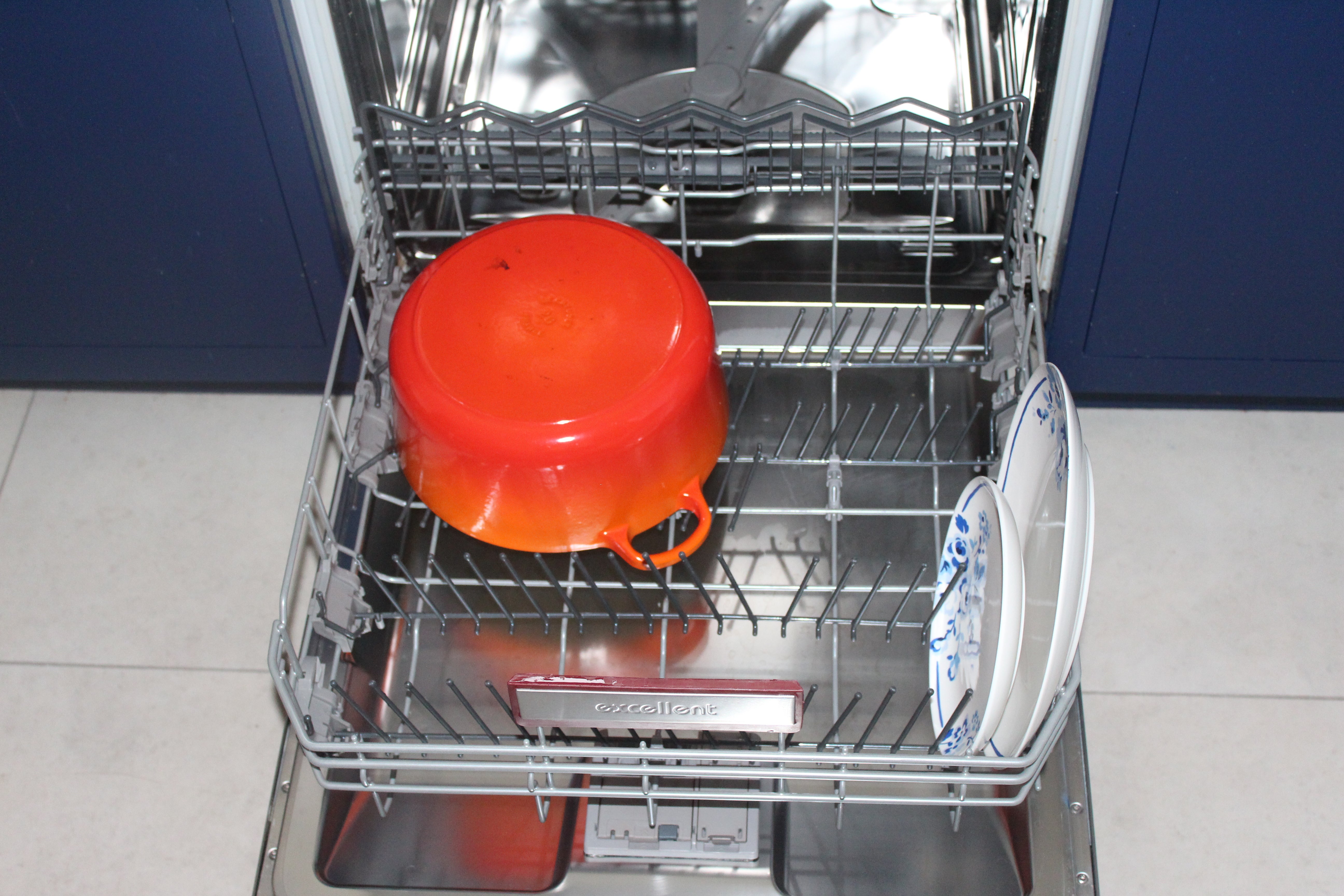
4. Place light items at the top
Delicate items, such as wine glasses, should be cleaned on the top rack. Avoid putting them directly next to each other if you can – alternating with cups is a good way to prevent scratching. Since the water jets that reach the sides aren’t as powerful, this is a good place for glasses. Angle them to help the water reach inside and also to prevent dirty water collecting in the recess underneath the glass. Most models have a zig-zag plastic or wire support that swivels to hold the stem of wine glasses when required.
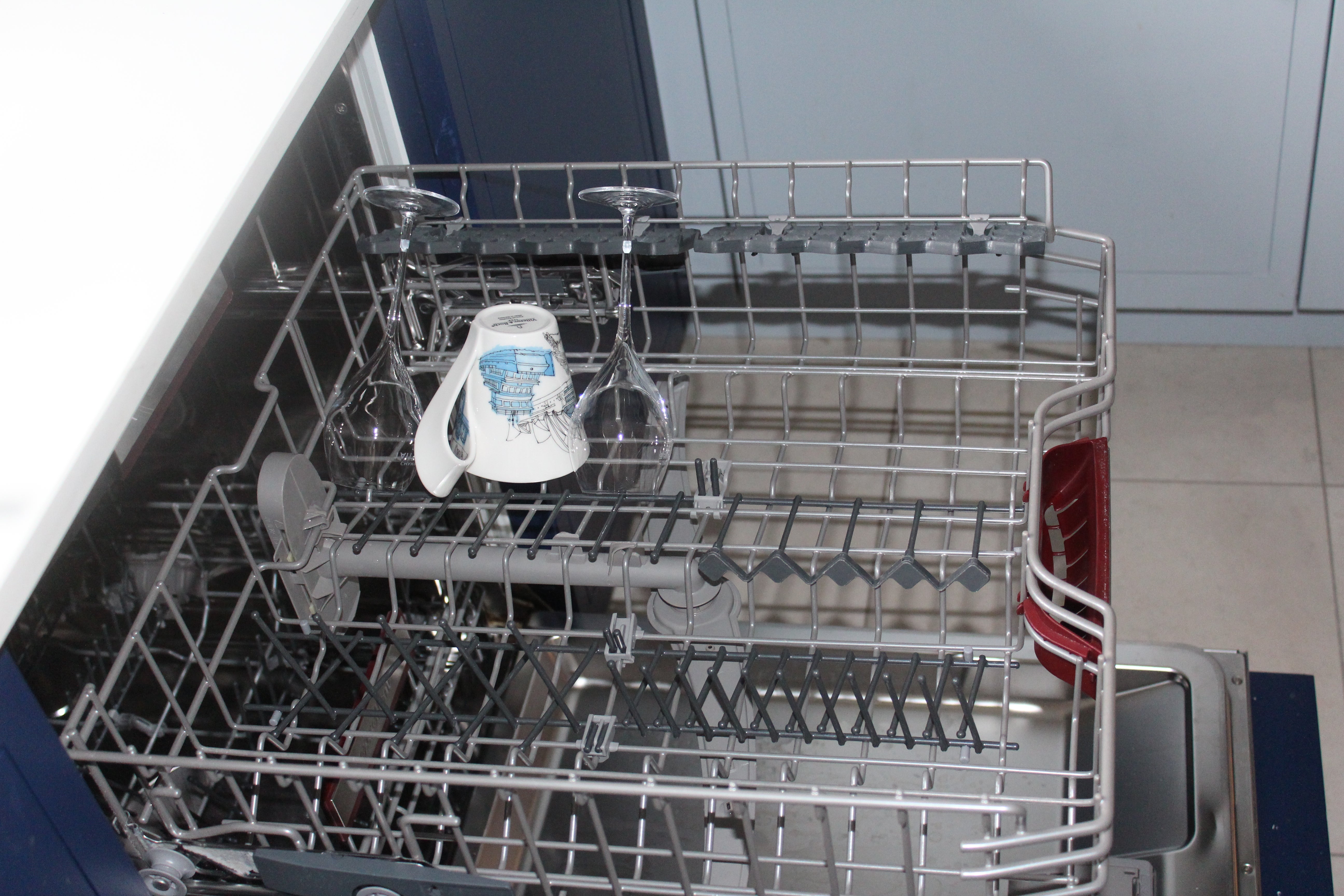
5. Use supports for plastic items
Plastic lunchboxes and storage should go on the top rack to help prevent warping. This is because the heating element in most dishwashers is at the bottom, meaning the water that reaches the top rack tends to be a little cooler for a gentler clean. Since they’re light, and sometimes flipped over by the jets, try to secure them by using drop-down supports or leaning heavier items next to them.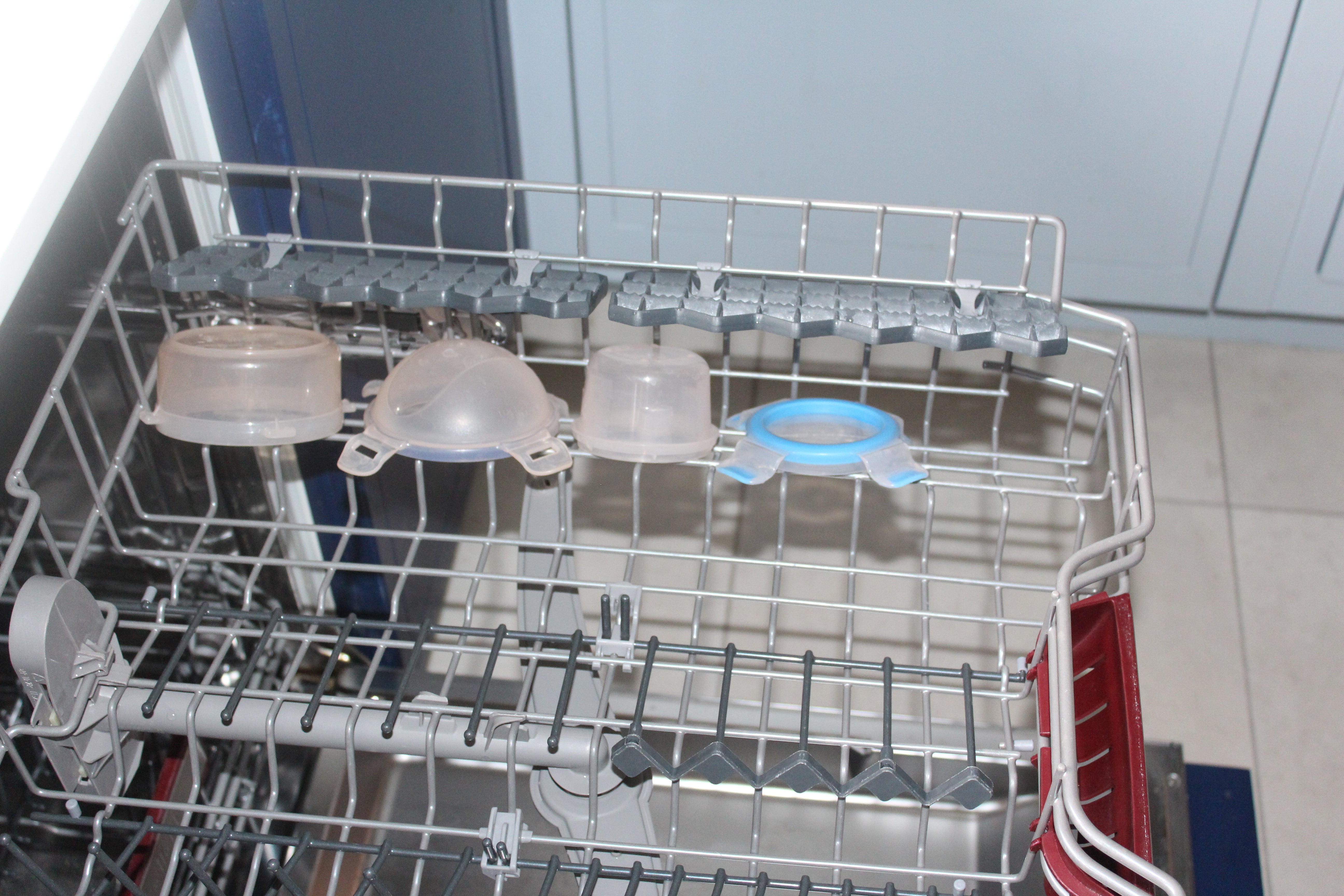
6. Cleaning cutlery
If your dishwasher has a sectioned pull-out for cutlery (usually above the top drawer), use that and put each piece in a suitably sized slot. There should be a mix of wide and narrow supports for cutlery, knives and cooking utensils.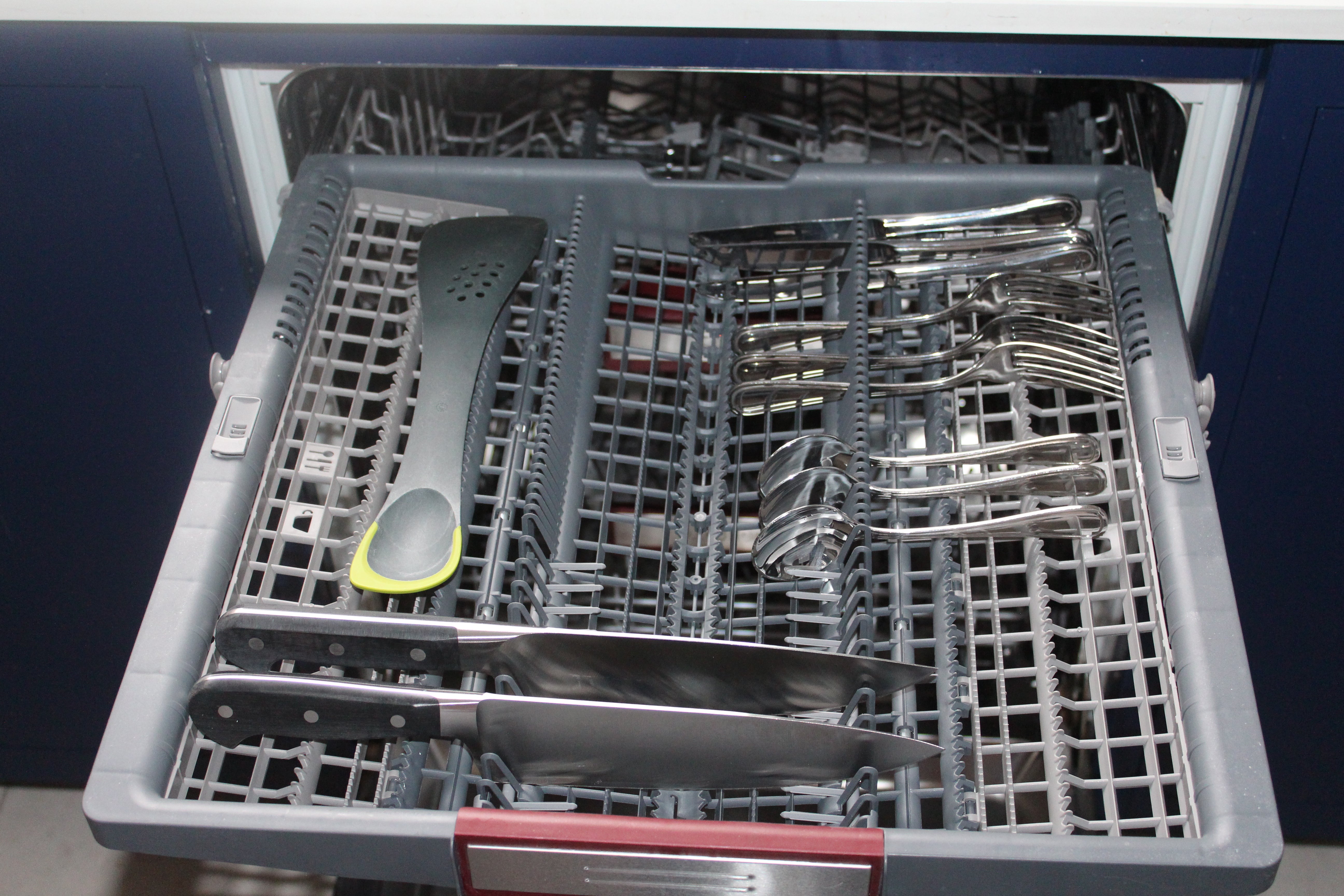
If not, put cutlery in the basket provided and mix up the items so there are different heights next to each other – for example, don’t nest forks or spoons together. Place sharp knives blade-down for safety, with most of the other pieces handle-down and some handle-up so that every item gets a good wash.
The basket itself can usually be sited anywhere in the bottom rack, so don’t just stick to its usual location every time. The centre can sometimes be a good place for it if you need the side space for large items.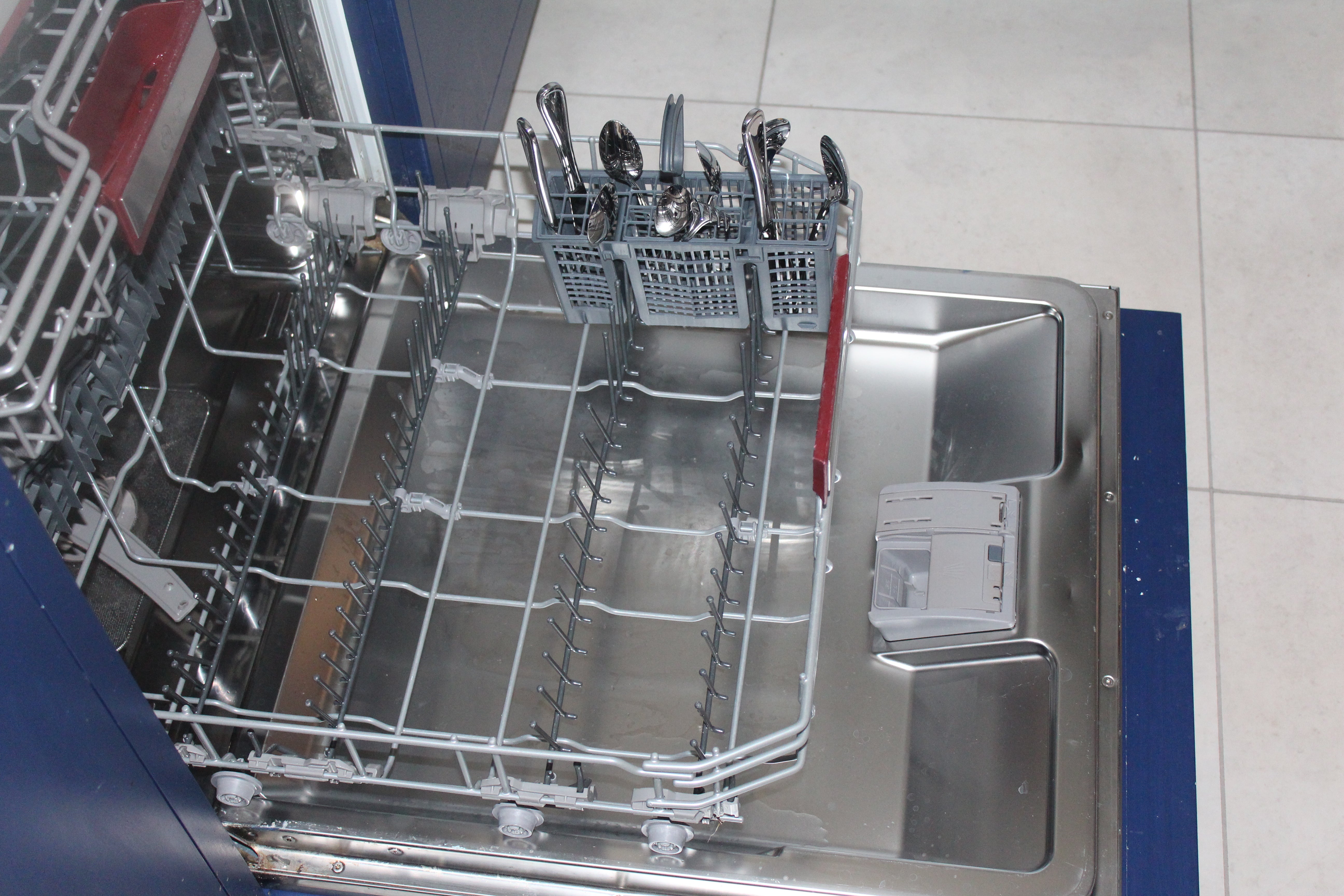
7. Taking care of your tools
Cooking utensils can sometimes be too tall for the basket, or an awkward fit. Lay these at the top, with spoon bowls facing down so they won’t collect waste water. Make sure anything with a slim handle won’t slip through the grid and prevent the spray arm below from spinning.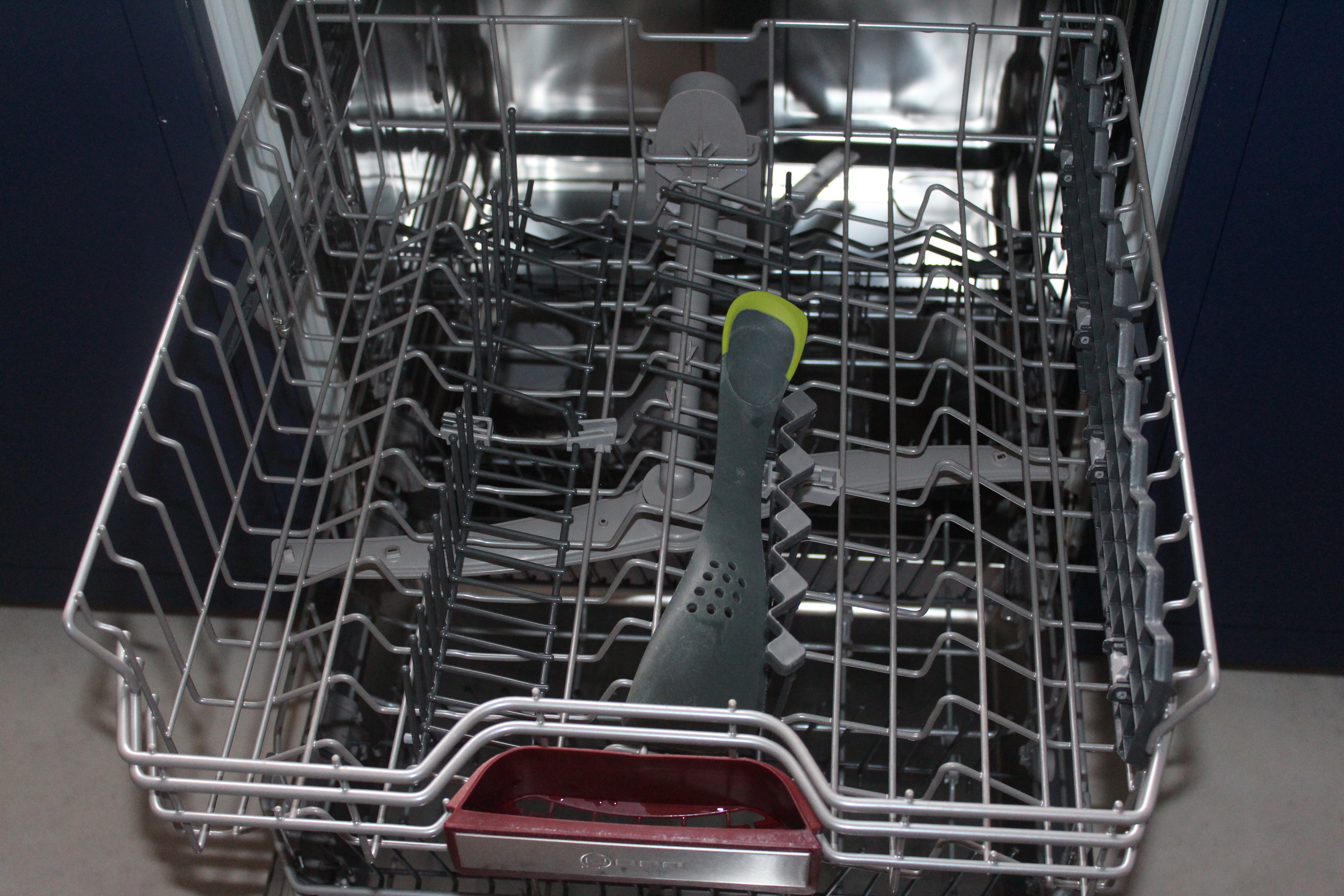
Related: How to unblock a dishwasher
8. Upside-down details
Bowls, cups and casserole dishes need to be inverted so the water can reach the interior. Angle slightly if you can to prevent water pooling on the base, and don’t put them on top of each other as the uppermost one won’t be cleaned properly.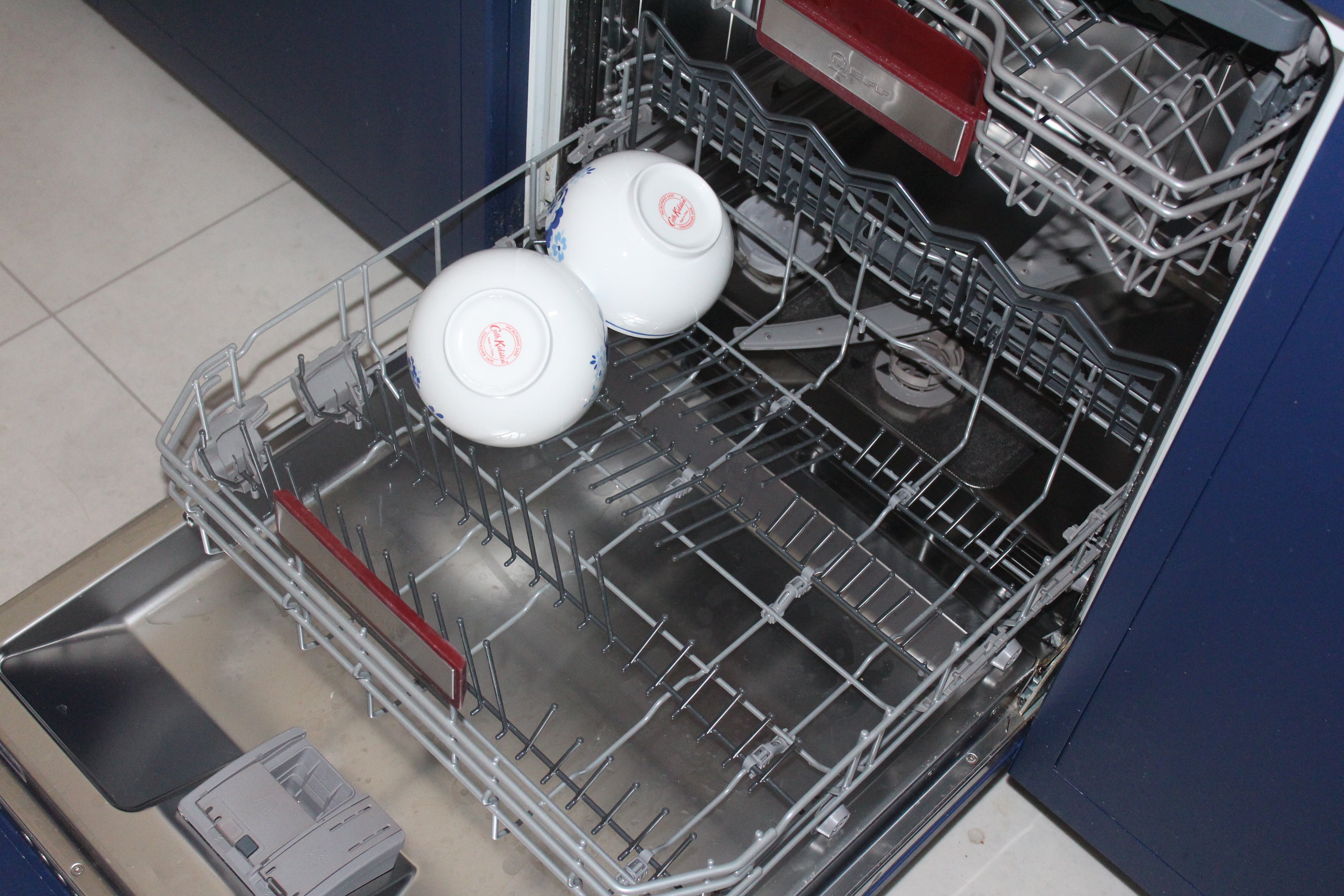
9. Rack ’em up (or down)
Some dishwashers have a top drawer that can be adjusted – this means you’ll be able to fit in long-stemmed glassware by lowering it or make space in the drawer below for taller items by raising it up. 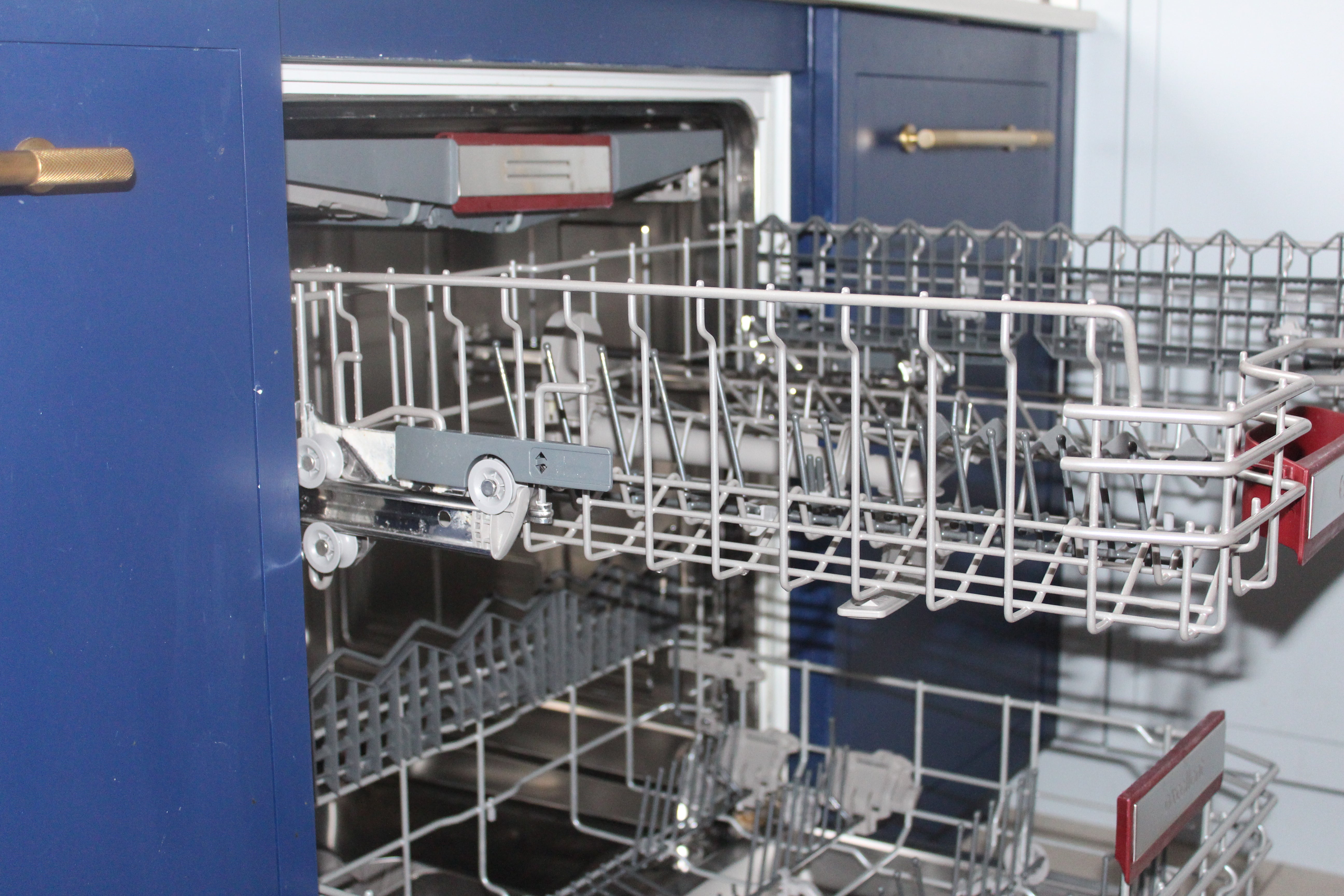 Adapting it may be as simple as lifting or dropping the drawer down using levers or buttons, or it may need to be removed and the runners repositioned.
Adapting it may be as simple as lifting or dropping the drawer down using levers or buttons, or it may need to be removed and the runners repositioned.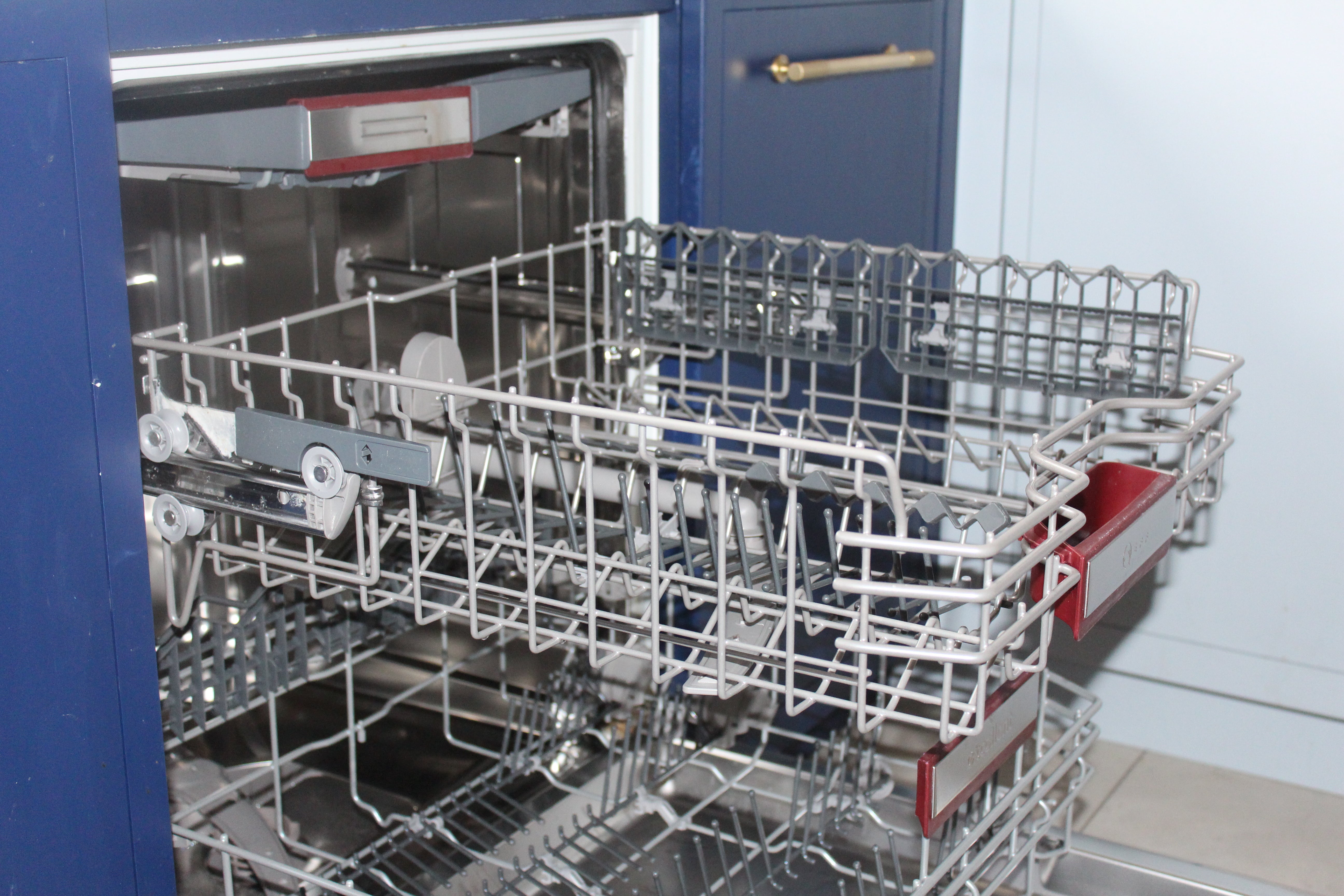
10. Quality over quantity
Avoid overloading your dishwasher – it’s often better to put excess pots in the next cycle. Cramming too much in means that the majority of items won’t get a thorough wash, and while they may look clean to the naked eye, they’re not hygienically so.
Finally, if your model doesn’t have a drying option at the end of a programme, empty the bottom drawer first. This will prevent any drips from the top drawer showering onto the items below.

